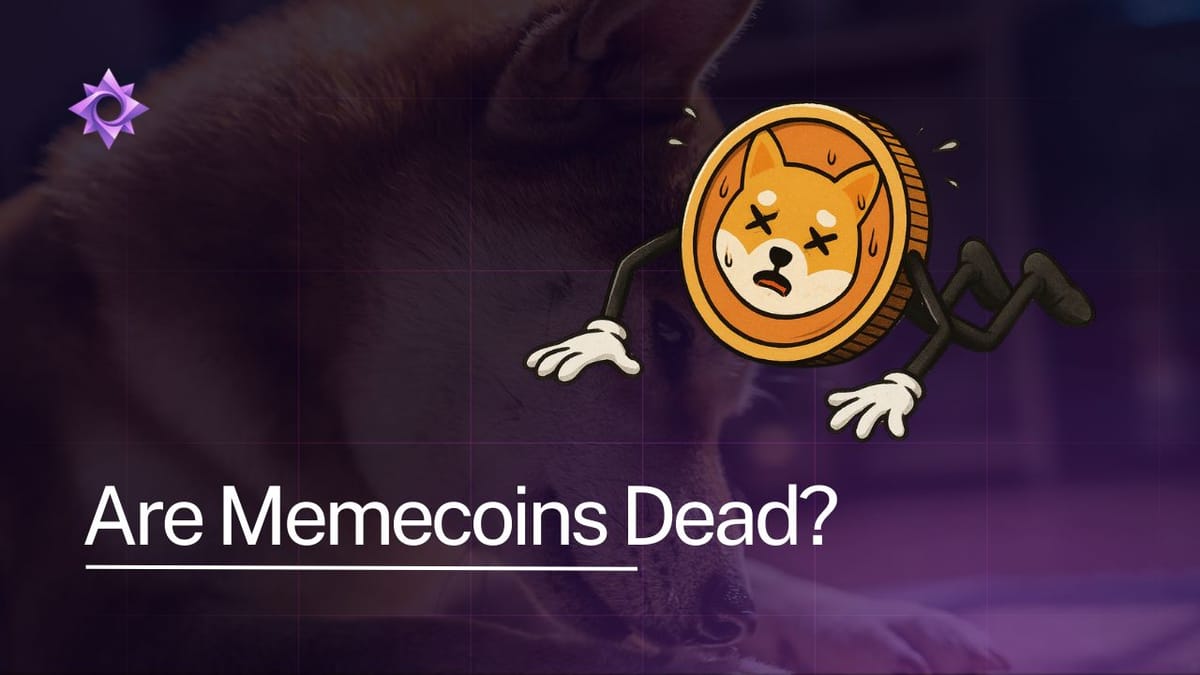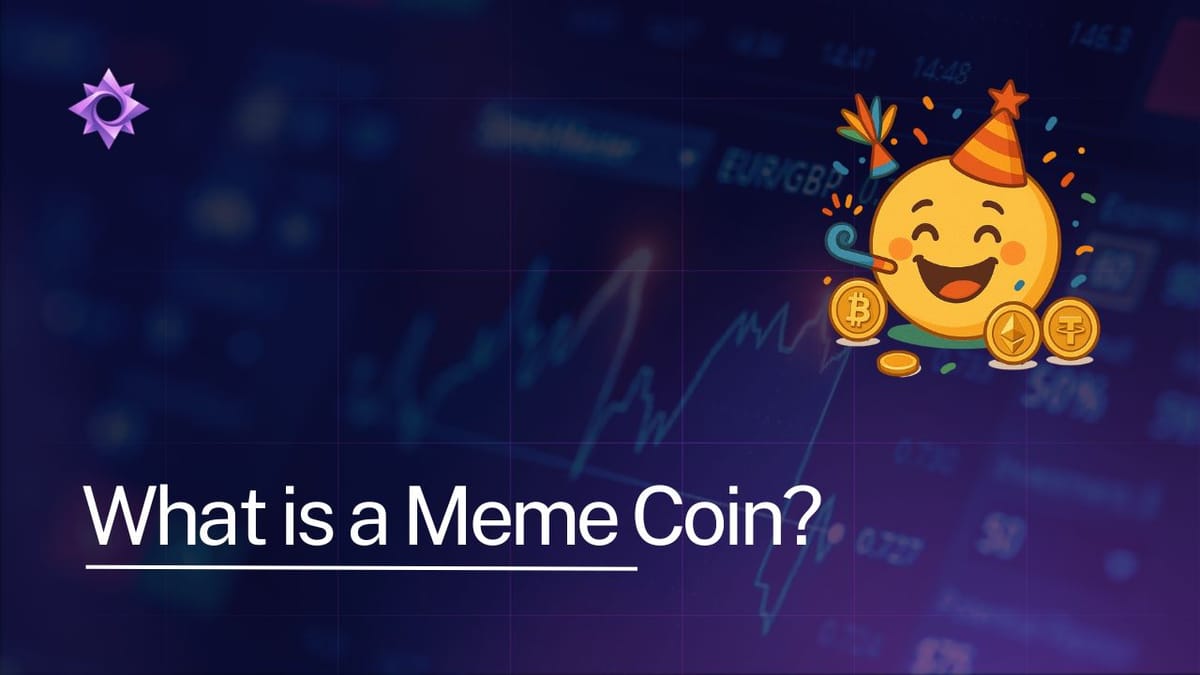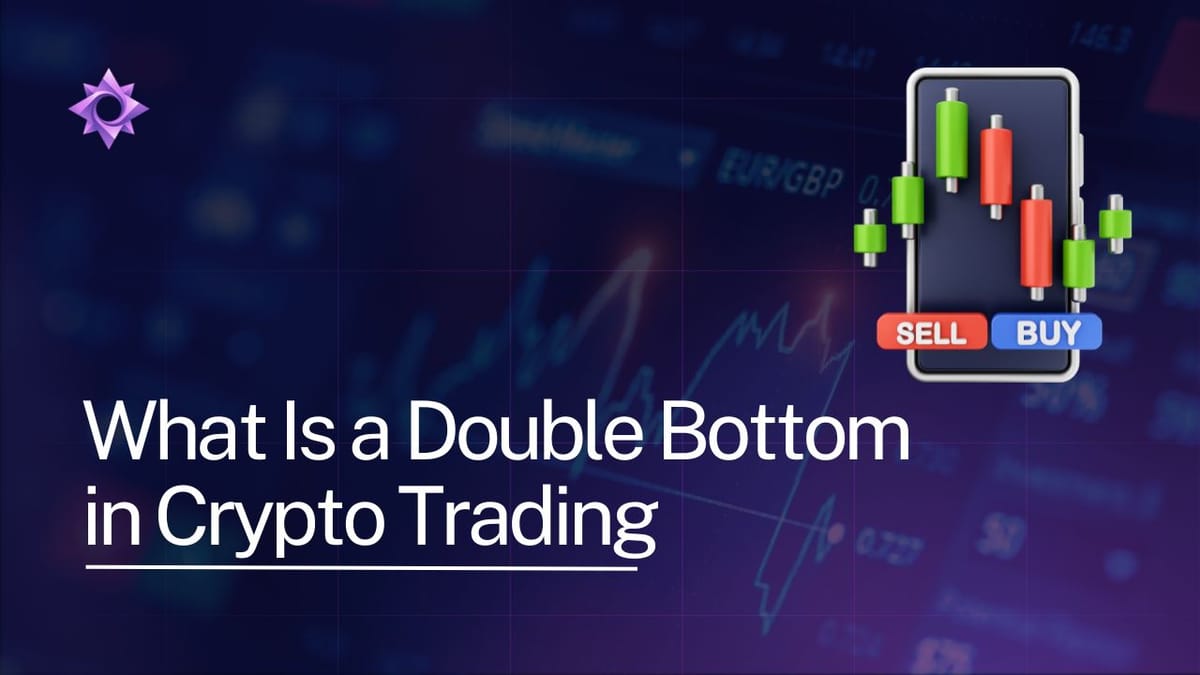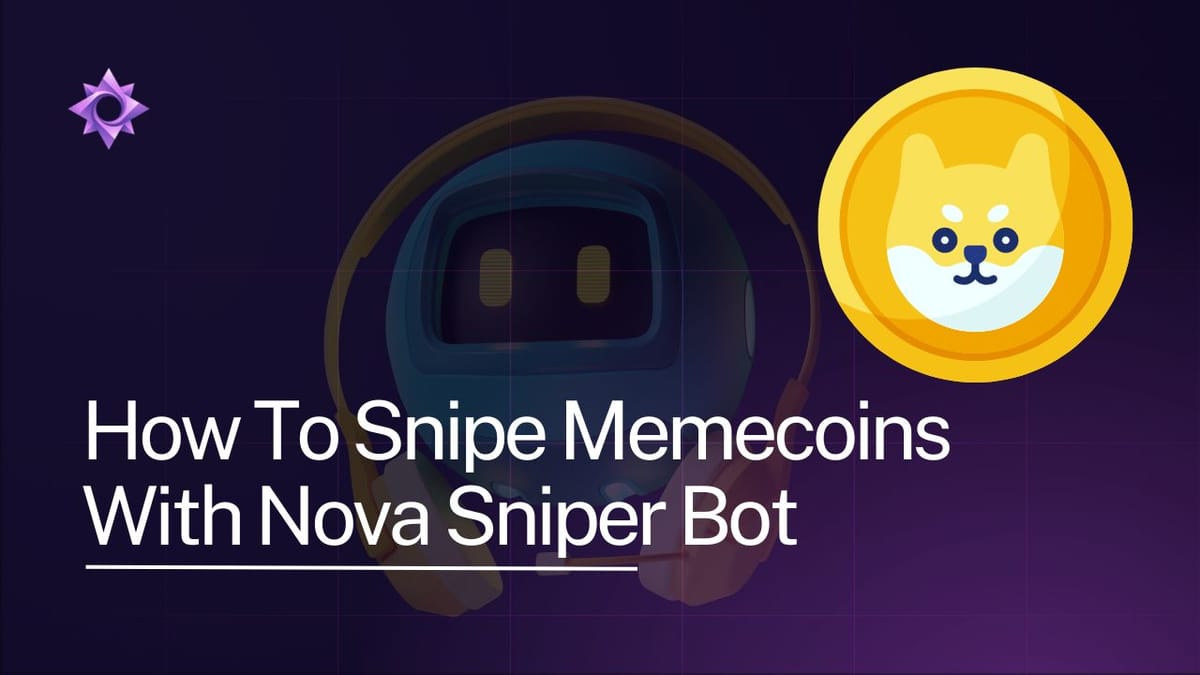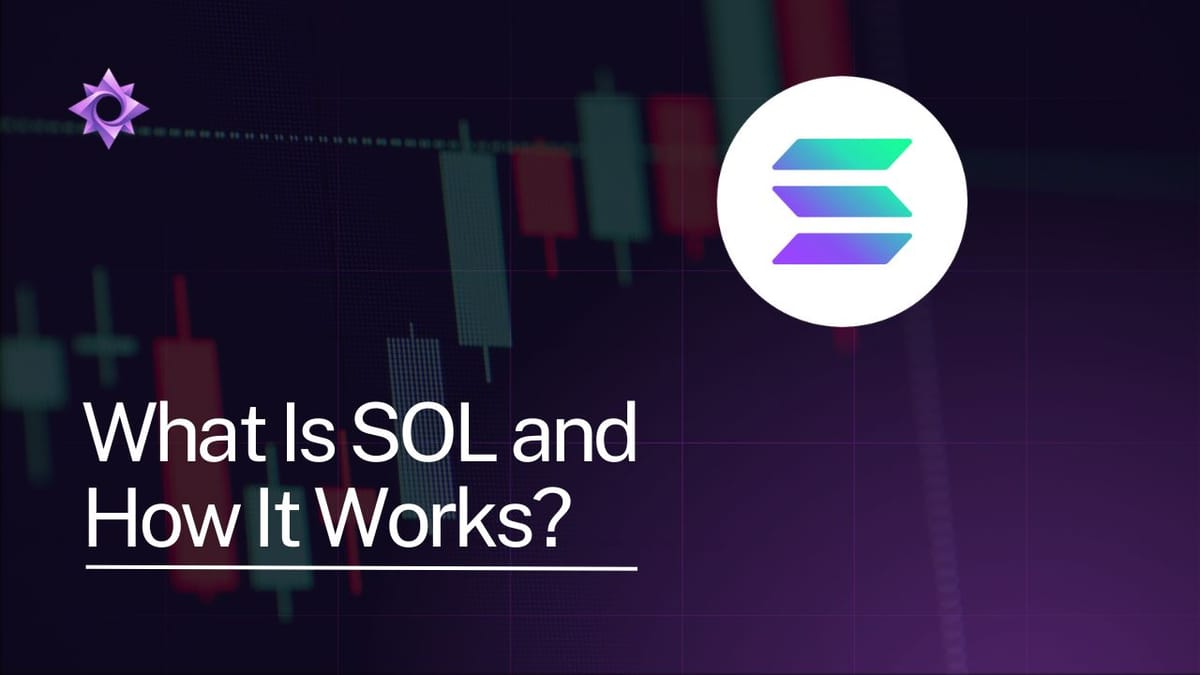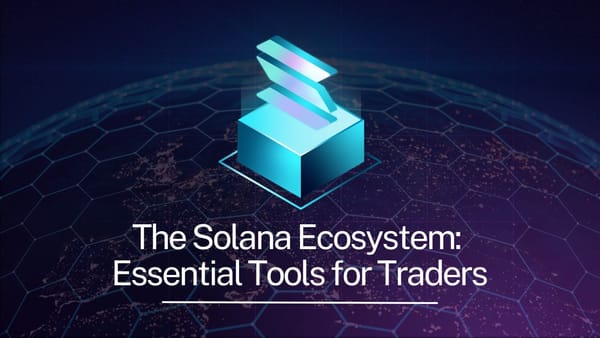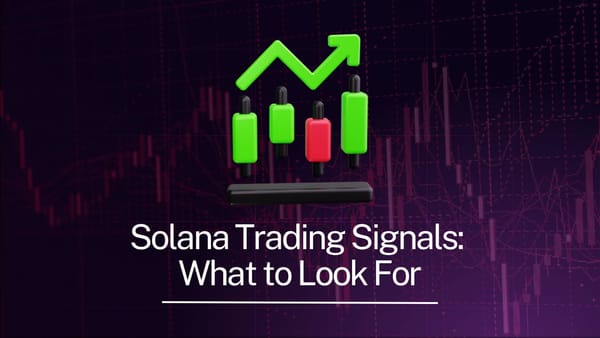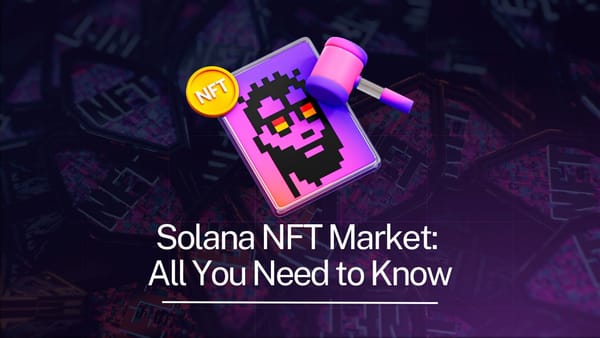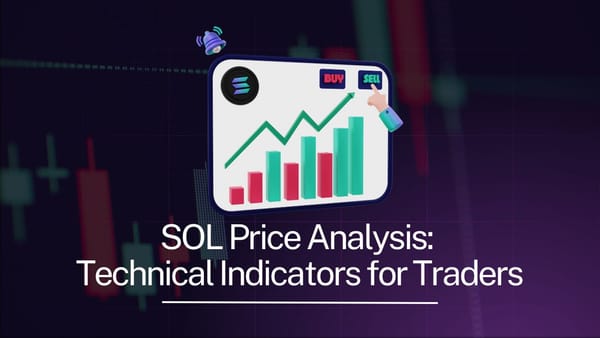Crypto Trading vs Investing
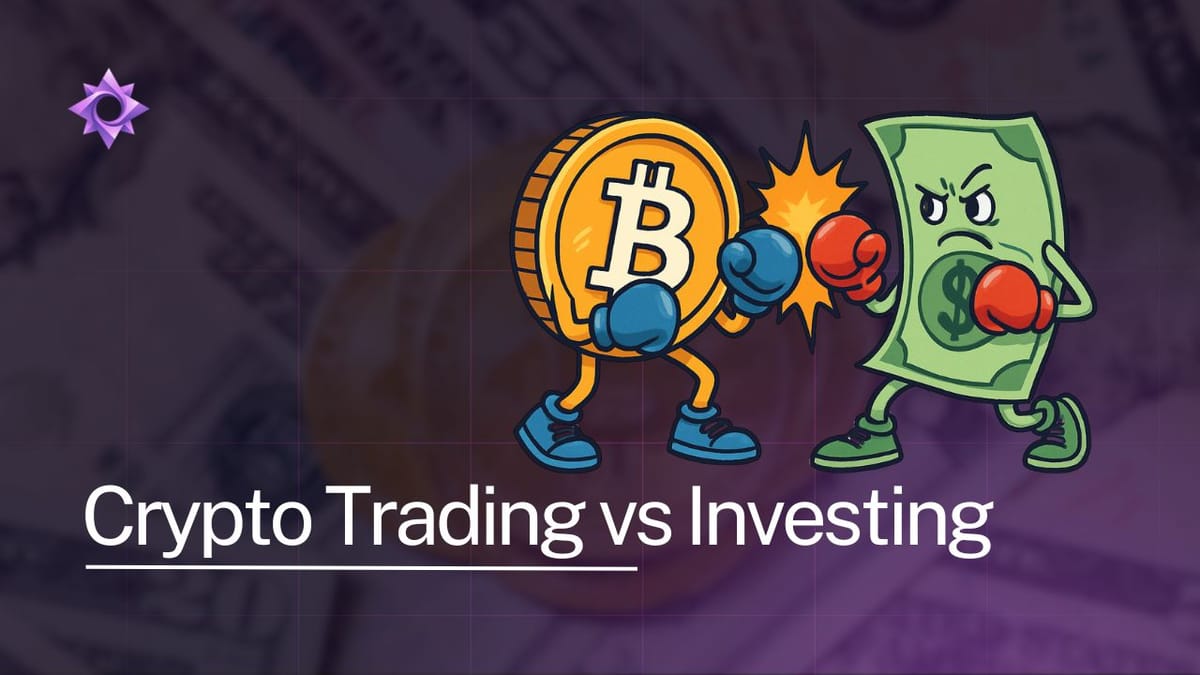
Crypto Trading vs Investing: Which Strategy is Right for You?
Thinking about getting into crypto?
That's cool.
But before you jump in, you've gotta figure out if you want to trade or invest.
They sound similar, right?
But they're actually pretty different.
It's like the difference between going for a quick jog and planning a marathon.
We'll break down what each one means so you can pick the strategy that fits you best. Let's get this sorted.
Key Takeaways
- Crypto trading is about short-term price swings, aiming for quick profits. You're watching charts and trying to buy low and sell high fast.
- Crypto investing is more about the long haul. You pick projects you believe in and hold them, hoping they grow over time.
- Your decision depends on how much risk you can handle and how long you want to wait for results. Trading is usually riskier and needs more attention.
- Tools like trading bots (think Nova Click with Telegram bots) can speed things up for traders, automating actions on exchanges.
- No matter what, learning about the crypto space and sticking to your plan is super important for success, whether you trade or invest.
Understanding Crypto Trading vs Investing
So, you're looking into crypto, but you're not sure if you want to trade it or invest in it.
It's a pretty common question, and honestly, the two aren't quite the same.
Think of it like this: investing is more about buying something and holding onto it for a long time, hoping it grows in value.
Trading, on the other hand, is more active.
You're trying to make money off the short-term price swings.
It's a bit like buying a house and hoping it appreciates over decades versus buying and selling houses quickly to make a profit on each flip.

Defining Crypto Trading
Crypto trading involves actively buying and selling digital assets to profit from price changes.
Traders often use technical analysis, looking at charts and patterns, to predict where prices might go next.
They might aim to catch a quick profit from a small price movement or ride a larger trend for a few days or weeks.
Tools like the nova trading bot can help automate these strategies, especially for fast-moving markets like Solana or meme coins.
It's about being in the market frequently, trying to time your entries and exits just right.
You might hear about specific patterns, like a double bottom, which can signal a potential shift in price direction for traders.
Defining Crypto Investing
Crypto investing is more of a buy-and-hold approach.
You pick a cryptocurrency, maybe Bitcoin or Ethereum, that you believe has long-term potential, and you hold onto it for months or even years.
The idea is that the overall value of the asset will increase over time, much like investing in stocks or real estate.
Investors often focus on the underlying technology, the project's roadmap, and the broader adoption of the cryptocurrency.
They're less concerned with daily price fluctuations and more focused on the asset's future utility and value.
Some people might use crypto ETFs as a way to get exposure without directly owning the coins.
It's a strategy that relies on the belief that the asset class itself will grow significantly over the long haul.
Key Differences in Approach
The main differences really boil down to time and activity.
Trading is short-term and requires constant attention and quick decisions.
You're trying to capitalize on market volatility.
Investing is long-term, requiring patience and a belief in the asset's future value.
While both carry risks, the nature of those risks differs.
Trading can be more stressful due to the frequent transactions and the need to constantly monitor the market.
Investing, while potentially slower to yield returns, can be less demanding on a day-to-day basis.
The choice between them often depends on your personal financial goals, how much risk you're comfortable with, and how much time you can dedicate to managing your crypto assets.
For instance, someone looking for quick gains might lean towards trading, while someone building wealth for retirement might prefer investing.
Understanding these core differences is the first step in deciding which path is right for you.
Time Horizon and Risk Tolerance
When you're thinking about getting into crypto, one of the first things to figure out is how long you plan to hold your assets and how much risk you're comfortable with.
These two things really shape whether you'll be more of a trader or an investor.
Short-Term Trading Objectives
If you're looking at crypto for short-term gains, you're probably thinking about making quick profits from price changes.
This often means you're watching the market closely, maybe even multiple times a day.
You might be trying to buy low and sell high within hours or days.
It's a fast-paced game, and you need to be ready to react quickly to news or market shifts.
For example, some people use tools like the NovaClick Trading Extension to help them execute trades faster and manage their positions when they're trying to catch those quick price movements.
It’s all about capitalizing on volatility.
Long-Term Investing Goals
On the other hand, if you're thinking long-term, you're probably looking at the potential for a cryptocurrency to grow in value over months or years.
This approach is usually less about daily price swings and more about the underlying technology or the project's future.
You might buy a crypto and hold onto it, believing it will be worth much more down the road.
This is more like buying stocks for the long haul, where you're not as worried about the day-to-day ups and downs.
While crypto is generally more volatile than stocks, this long-term view is similar to how people approach traditional investments.
Assessing Personal Risk Appetite
So, how much risk can you handle?
This is super important. If the thought of losing money makes you really anxious, then maybe day trading volatile cryptocurrencies isn't for you.
It's generally advised to only put a small portion of your total money into crypto, maybe around 5% of your portfolio, to keep things manageable.
You also need to think about your financial situation.
- Do you have stable income?
- Do you have an emergency fund?
If you need the money you invest in crypto soon, that's a big red flag.
Your risk tolerance should guide how much you invest and what strategy you choose.
For instance, if you're using something like the Nova Trading Bot, you can often set parameters for how much risk you're willing to take on, which is a good way to align the tool with your personal comfort level.
It’s about finding a balance that works for your peace of mind and your wallet.
Market Analysis and Strategy Development
So, you've decided to get into crypto, but now what?
You can't just throw money at random coins and hope for the best.
You need a plan, and that plan starts with understanding the market. This is where analysis comes in.
It's not just about guessing; it's about looking at the data and making informed decisions.

Technical Analysis for Traders
If you're leaning towards trading, you'll want to get familiar with technical analysis.
This is all about looking at charts and past price movements.
Think of it like reading a weather report for the crypto market.
You're looking for patterns, trends, and signals that might tell you when to buy or sell.
Things like moving averages, support and resistance levels, and trading volume are your bread and butter here.
It's a way to try and predict short-term price changes.
Many traders use tools to help them spot these patterns quickly, and some even use bots to execute trades based on these signals.
It's a fast-paced approach that requires constant attention.
Fundamental Analysis for Investors
On the other hand, if you're thinking more like an investor, you'll be looking at fundamental analysis.
This is about digging into the actual value of a cryptocurrency.
- What problem does it solve?
- Who is the team behind it?
- Is it actually being used by people?
You're looking at the long-term potential, not just the daily price swings.
This might involve reading whitepapers, checking out the project's roadmap, and seeing how it compares to other similar projects.
It's a slower, more research-heavy approach, but it can lead to more stable growth over time.
Some people find that combining this with technical analysis for entry points works well for their crypto investment strategy.
Developing a Trading Plan
Whatever your approach, having a plan is key.
For traders, this means defining your entry and exit points before you even make a trade.
- What's your risk tolerance?
- How much are you willing to lose on a single trade?
- What's your profit target?
A good trading plan also includes how you'll manage your emotions, because the crypto market can be a wild ride.
You need to stick to your plan, even when things get a bit crazy.
It's also helpful to know how your chosen assets relate to broader markets, like the stock market, to get a fuller picture of their correlation.
Formulating an Investment Strategy
For investors, your strategy might focus on dollar-cost averaging into projects you believe in long-term.
This means investing a fixed amount of money at regular intervals, regardless of the price.
It helps smooth out the volatility.
You might also consider diversifying your portfolio across different types of crypto assets.
Some investors also look at regulated products like crypto ETFs, which can offer a more structured way to get exposure to the market.
The goal is to build a portfolio that aligns with your financial objectives and risk tolerance.
It's about patience and believing in the long-term vision of the projects you choose.
For those focused on specific niches like memecoins, tools like Nova Click can be incredibly useful for tracking wallet movements and identifying potential trends, but it's always best to combine this with your own research.
Tools and Technology for Crypto Engagement
So, you're looking to get more involved in the crypto space, and you're wondering what tools can actually help you out.
It’s not just about picking a coin and hoping for the best, you know?
There’s a whole ecosystem of tech designed to make your trading or investing life a bit easier, and maybe even more profitable.
Leveraging Trading Bots
Trading bots are pretty popular.
They're basically automated programs that can execute trades for you based on certain rules you set.
Think of it like having a tireless assistant who's always watching the market.
For Solana traders, bots can be especially useful because the network is known for its speed and low fees.
Some bots can even help you snipe new tokens as soon as they launch, which can be a big deal if you're trying to catch those early pumps.
You can find bots that work with platforms like Axiom Trade or BullX, giving you options for how you want to automate your strategy.
Using a bot means you don't have to be glued to your screen 24/7.
Utilizing Decentralized Exchange Features
Decentralized Exchanges, or DEXs, are where things get really interesting for many crypto enthusiasts.
Unlike traditional exchanges, DEXs don't hold your funds; you trade directly from your own wallet.
This gives you more control, but it also means you need to be more careful.
Many DEXs offer advanced features like limit orders, stop-loss orders, and even yield farming opportunities.
Some platforms are really pushing the boundaries, allowing for the integration of traditional assets alongside crypto, which could be a game-changer for some investors Apex AscendOS.
The Role of Browser Extensions
Browser extensions can be super handy for keeping tabs on your crypto activities without having to constantly switch between different apps or websites.
Some extensions are designed to track your portfolio performance in real-time, showing you your gains and losses across various assets.
Others focus on providing market data, like liquidity and volume analysis, or even checking the history of a token's developers to help you spot potential scams.
Getting early access to new tools can give you an edge, and sometimes you can get a novaclick early access code for special perks.
For instance, tools like Nova Click are built as browser extensions to help you manage your Solana trades more effectively, offering features like real-time monitoring and scam detection Nova Click.
It's important to remember that while these tools can be powerful, they aren't magic bullets. You still need to do your own research and understand the risks involved. Think of them as aids to your strategy, not replacements for it. The crypto market is always changing, so staying informed is key, and having the right tools can certainly help you keep up.
When you're looking for tools, consider what you need most.
- Are you trying to automate trades?
- Do you want better insights into market trends?
- Or are you focused on managing your portfolio across different assets?
There are platforms out there that offer a wide selection of cryptocurrencies with good liquidity, making it easier to buy and sell assets confidently high liquidity.
Ultimately, the best tools are the ones that fit your personal trading style and goals, helping you make more informed decisions in the fast-paced world of digital assets.
You might even find that a tool like Nova Click, which offers both bot functionality and browser extension features, could be a good fit for managing your Solana-based assets Solana trading bot.
Exploring different asset management tools can also be beneficial, with many platforms offering features like automated trading and risk management to help you navigate the market crypto asset management tools.
Profit Potential and Volatility
When you're in the crypto market, you'll notice things can move really fast.
This is where profit potential and volatility come into play.
Trading often aims for quick wins, trying to catch small price changes.
Think of it like trying to grab a few dollars from a fast-moving river. It requires sharp focus and quick reactions.
On the other hand, investing is more about letting your money grow over time, like planting a tree and waiting for it to bear fruit.
The potential for big gains is there for both, but the way you get there is quite different.

Maximizing Gains Through Trading
For traders, the goal is to profit from short-term price swings.
This might involve strategies like scalping, which is about making many small trades to accumulate profits.
You might use tools that help you react instantly to market changes.
For example, some traders use bots to execute trades the moment a certain price is hit. This speed is key.
The potential for high returns in trading comes from frequent, successful transactions.
It's a game of precision and timing.
You could look into platforms that offer fast execution and low fees, like Nova Click, to help you make the most of these opportunities.
Compounding Returns Through Investing
Investing in crypto is usually about holding assets for a longer period, believing their value will increase significantly over months or years.
This approach relies on the idea that the overall market or a specific project will grow.
Instead of trying to time every small up and down, you're betting on the long-term trend.
This is where the power of compounding can really work for you.
Your initial investment grows, and then the profits from that investment start earning their own profits.
It’s a slower burn, but it can lead to substantial wealth over time.
Comparing crypto to traditional assets can give you a better perspective on this long-term growth.
Navigating Market Volatility
Cryptocurrencies are known for being volatile.
This means prices can jump up or down dramatically in a short period. For traders, this volatility can be an opportunity to make profits, but it also means higher risk.
A trade that looks good one minute could turn sour the next.
For investors, extreme volatility can be nerve-wracking.
It’s important to remember that assets like Bitcoin have seen massive price swings throughout their history, and this is often seen as part of the deal for their potential future value.
Having a plan for how you'll handle these ups and downs is really important, no matter your strategy.
You might want to set limits on how much you're willing to lose on any single trade or investment.
This is where risk management tools become useful, helping you protect your capital even when the market gets wild.
Some platforms combine market insights with automation to help manage these risks, which can be a big help when you're trying to make sense of rapid price changes across markets.
Choosing Your Path in the Crypto Market
So, you've been thinking about how to actually get involved in the crypto market, right?
It's not just about picking a coin and hoping for the best.
You've got to figure out what kind of player you want to be.
Do you want to be someone who's always watching the charts, trying to catch every little price move?
Or are you more of a 'buy and hold' person, believing in the long-term potential of certain projects?
Aligning Strategy with Financial Goals
Your financial goals are a big deal here.
If you're saving for a down payment in a year, you're probably not going to be holding onto volatile assets for the long haul.
Maybe you're looking for quick wins, or maybe you're building wealth over decades.
Your timeline directly impacts whether trading or investing makes more sense. It's about matching your money goals with how you approach the market.
For instance, if you're aiming for steady growth over many years, investing might be your go-to.
If you're trying to build capital quickly, even with higher risk, trading could be an option.
Think about what you want your money to do for you and when you need it to do it.
The Importance of Continuous Learning
No matter which path you choose, things change fast in crypto.
New coins pop up, regulations shift, and technology evolves.
You can't just set it and forget it, especially if you're trading.
Even investors need to stay informed about the projects they're backing. Keeping up with market news, understanding new trends, and maybe even learning about tools like the NovaClick Solana Bot can make a big difference.
It’s a market that rewards those who stay curious and keep learning.
When to Consider Switching Approaches
It’s also okay to change your mind. Maybe you start as an investor, but you find yourself drawn to the excitement of trading.
Or perhaps you're a trader who decides to take some profits and invest them for the long term.
Your personal circumstances, risk tolerance, and even your knowledge level can change.
Don't feel locked into one strategy forever.
Many people find success by blending both approaches.
For example, you might have a core portfolio of long-term investments and then use a smaller portion of your funds for more active trading.
The key is to be adaptable and make decisions based on what feels right for you at any given time.
Remember, the crypto market is dynamic, and so should your strategy be.
Understanding the differences between trading and investing is the first step to making informed choices.
Figuring out where to put your money in the crypto world can feel like a maze. There are so many options, it's easy to get lost! But don't worry, we're here to help you find your way.
Think of it like picking a path in a big park – some paths are easy, some are a bit trickier, but each leads somewhere interesting. Ready to explore the best routes for your crypto journey? Visit our website to get started!
Conclusion
Alright, so you've heard about trading and investing in crypto.
They're pretty different, right?
Trading is more about quick moves, trying to catch those short-term price swings.
Investing is more of a long-game, holding onto assets you think will grow over time.
Think about what kind of person you are.
Do you like the thrill of making lots of small decisions, or do you prefer to set it and forget it, letting your money work for you over months or years?
There's no single right answer here.
Your choice really depends on your own comfort level with risk, how much time you have to watch the markets, and what your financial goals are.
Maybe you start with one and see how it feels. You could even do a bit of both.
The main thing is to understand what you're getting into before you put your money down.
Frequently Asked Questions
What's the main difference between crypto trading and investing?
Think of trading like actively buying and selling crypto, aiming to make quick profits from price swings. Investing is more like buying crypto and holding onto it for a long time, hoping its value grows over years. Trading is fast-paced, investing is a marathon.
Which strategy is better for me?
If you like excitement and are okay with taking risks for potentially faster gains, trading might be for you. If you prefer a calmer approach and are willing to wait for long-term growth, investing could be a better fit. It really depends on your personality and how much risk you're comfortable with.
How do people decide what to buy and sell?
Traders often look at charts and patterns to guess where prices might go next. Investors usually check how strong a crypto project is, like who is behind it and what problem it solves, to see if it's a good long-term bet.
How long do people usually hold crypto when trading versus investing?
Trading usually involves shorter timeframes, maybe hours, days, or weeks. Investing typically means holding onto your crypto for months or even years.
Is crypto trading or investing more risky?
Crypto can be super unpredictable! Trading aims to make money from these ups and downs, but you could also lose money quickly if the price goes the wrong way. Investing also has risks, but the idea is that the value will go up over a longer period, smoothing out some of the wild price swings.
What kind of tools can help with crypto trading or investing?
Tools like trading bots can help automate buying and selling based on rules you set. Browser extensions can offer quick info or ways to interact with crypto platforms. For example, Nova Click works with Telegram bots to speed up your crypto transactions on Solana, making things like buying or selling faster with preset options.
More Nova Click Guides:
